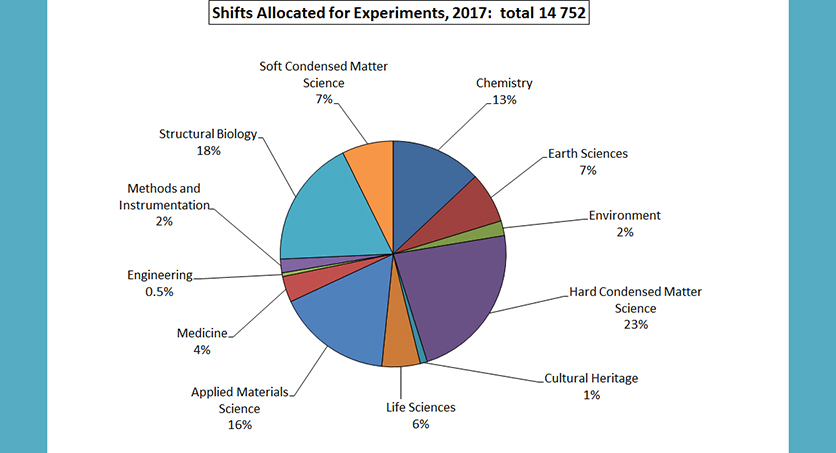- Home
- News
- General News
- ESRF 2017 beamtime...
ESRF 2017 beamtime allocation sets new record high
14-06-2017
In 2017, a record high of 1022 experiment proposals were accepted from a total of 2409 proposals submitted, representing a total beamtime of 14752 shifts allocated out of the 34268 shifts requested. This is the first time that the ESRF has exceeded 1000 experiment proposals accepted in one year.
In the latest proposal round, with deadline on March 1st, a total of 1255 proposals were submitted. After review, 540 proposals were accepted, for a total beamtime allocation of 7820 shifts. These figures again break existing records for a single proposal round.
The proposal acceptance rate in 2017 is 42%.
Since the upgrade of the facility, a steady increase in requests from scientific users has been observed. 2017’s figures consolidate this trend and underline the ESRF’s continued popularity among scientists to obtain beamtime and make use of the exceptional facilities available at the ESRF.
 |
|
Number of shifts allocated in 2017 per field of science ©ESRF |
How can the ESRF allocate more shifts when fewer beamlines are in operation?
Despite operating fewer beamlines than before the beginning of the Upgrade Programme, the ESRF is able to allocate a similar number of shifts to more proposals than in the pre-Upgrade era. This can be explained by several factors: beamlines are faster and more efficient, meaning more experiments can be scheduled in the same amount of time; most beamlines have also been fully rebuilt or refurbished during Phase I and require less commissioning of new or replacement components with fewer unfinished projects needed to be carried forward; finally, fewer long term projects are underway as we head towards the long shutdown for ESRF-EBS, this results in more time available for new standard proposals.
In 2008, the ESRF launched a major upgrade of the facility and completed the first phase of the programme in 2015. As a result, the ESRF benefits from 19 new generation experimental stations to explore the nanoworld, as well as greatly enhanced site logistics and user reception facilities.
Following on from this success, the ESRF is pursuing the upgrade with the project ESRF-EBS: the Extremely Brilliant Source. The major technological challenge of this project is to build a new and first-of-a-kind storage ring with performances multiplied by 100 in terms of brilliance and coherence. This new source of synchrotron radiation will offer unprecedented tools for the exploration of matter and for the understanding of life at the macromolecular level.
The ESRF-EBS project also includes the construction of new state-of-the-art beamlines, an ambitious scientific instrumentation programme including high-performance detectors and a "data as a service" strategy.
Find out more about applying for beamtime at the ESRF.
Learn more about the ESRF-EBS project.
Top image: ESRF exceeds 1000 mark in 2017 for proposals accepted. ©ESRF



